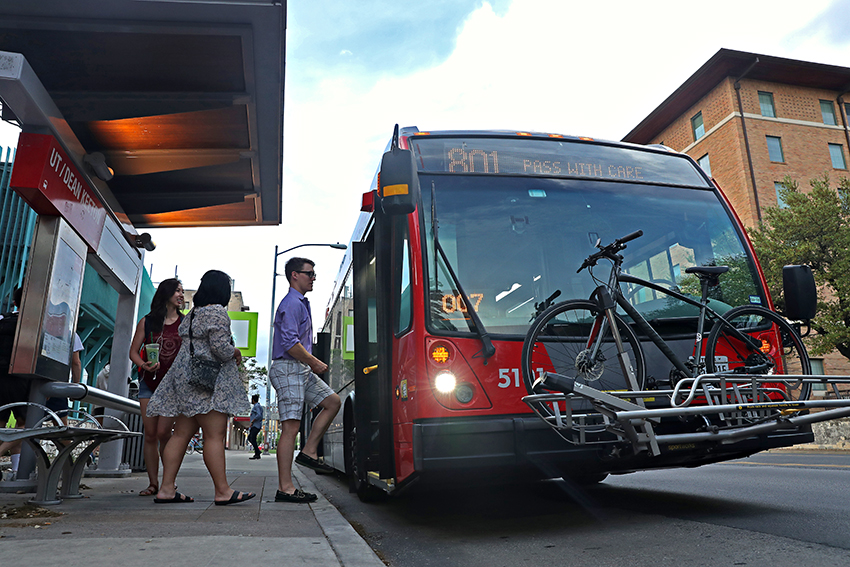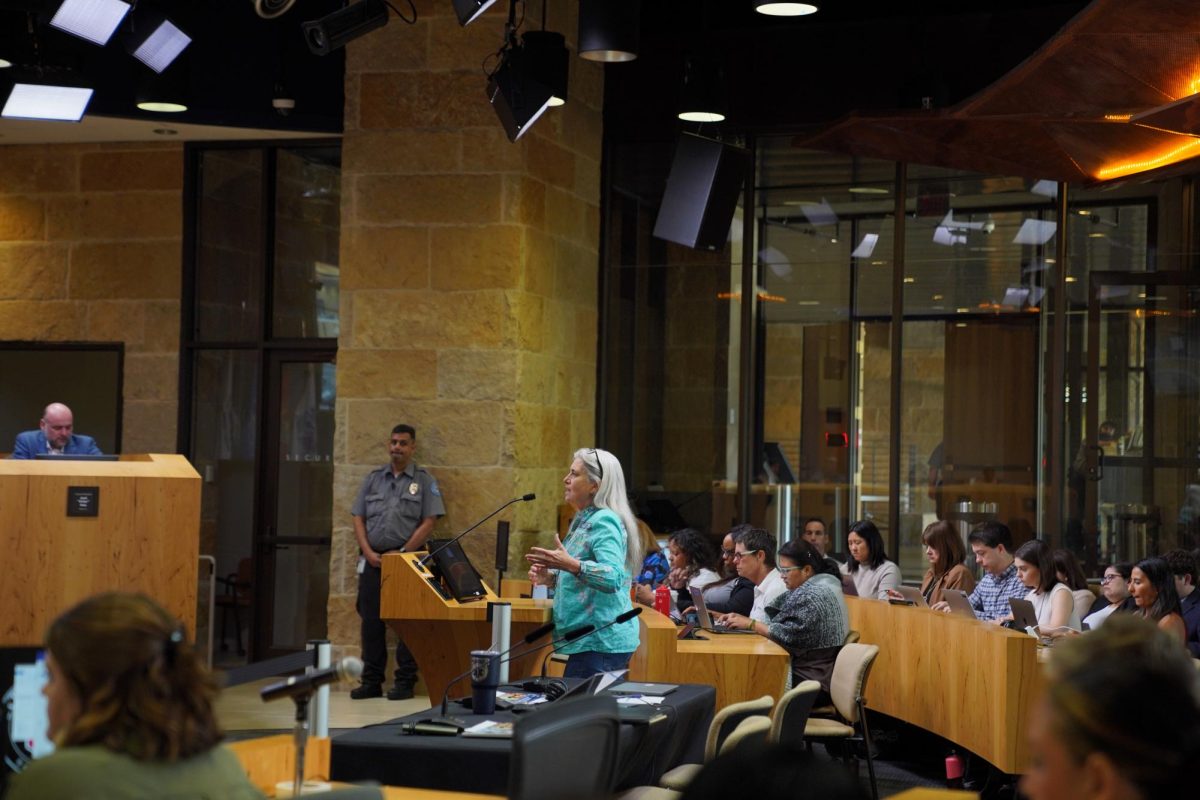According to Capital Metro, the largest public automated-bus pilot in the country will take place this fall in Austin. Cap Metro has already begun testing a fleet of six electric, self-driving buses, which can carry up to 15 passengers and are ADA-accessible.
Last year, a first round of self-driving vehicles were tested on UT’s campus, and Cap Metro spokeswoman Mariette Hummel said that if the bus pilot goes well, she could see the vehicles expanding to the 40 Acres in the future.
“We did testing at UT because we feel the student population at UT is one of the groups most interested in innovation and new things,” Hummel said. “We advise all UT students, who can ride for free, to try to these vehicles (during the pilot program) and give us feedback.”
Blanca Gamez, assistant director of UT Parking and Transportation Services, said she thinks electric and automated vehicles are the way of the future, but that there is a lot to consider before they can arrive on UT’s campus.
“There is always a possibility for new technology to be introduced to our campus,” Gamez said. “However, there would need to be related University budget considerations and approvals, as well as campus support for such a program.”
Nonetheless, UT students will still be in proximity to the buses during the pilot, since according to Cap Metro, the routes will serve downtown. The exact bus routes are not posted yet, but will likely serve City Hall, the Central Library and transit services such as Republic Square and MetroRail, a Cap Metro press release said.
The buses will arrive every five to seven minutes, according to the press release. Hummel said an important part of the program is that it fights heavy Austin traffic by getting more vehicles off the road.
“Anything that will take more people off the road is welcome to anyone in Austin because more people off the road means less traffic,” Hummel said.
Vehicles that burn fuel and thus release greenhouse gases are the main contributor to carbon dioxide release in Austin, according to the City of Austin’s Office of Sustainability.
While there may be sustainability benefits, there are still concerns about safety with automated vehicles. Hummel said the vehicles are very reliable as they can detect hazards on all sides. She added a Capital Metro representative will be on board at all times for both security and customer service.
Transportation engineering professor Chandra Bhat, who specializes in the social and environmental implications of transportation, said while automated vehicle technology is safe, there are many concerns, such as cybersecurity, the effects on urban sprawl and programming ethics.
“We are talking about thousands of deaths on the highway on an annual basis, and when we can make that come to close to zero with automated vehicles, it becomes a societal responsibility (to innovate),” Bhat said. “But like any innovation, it’ll take time to perfect.”





















